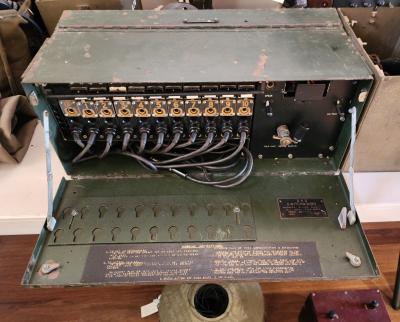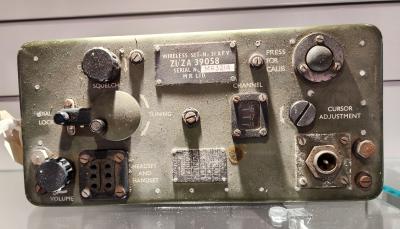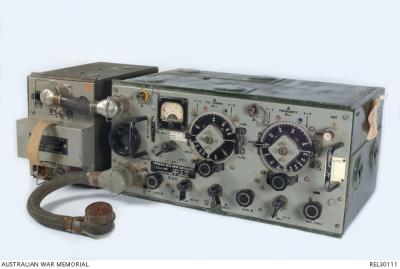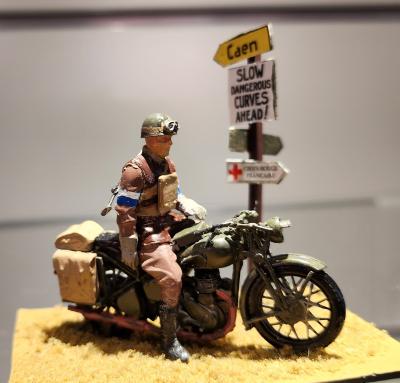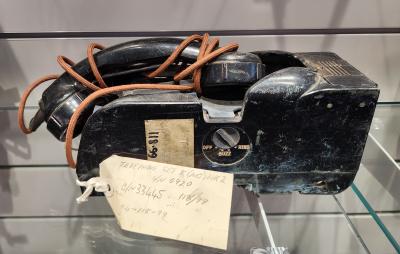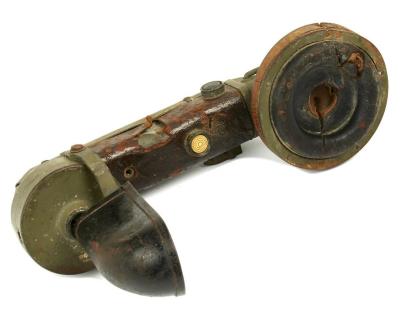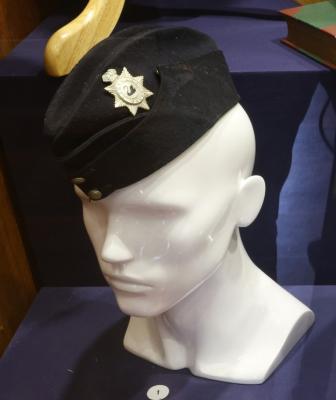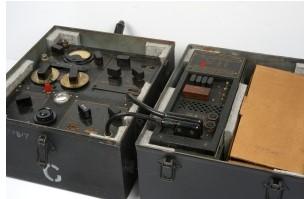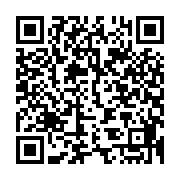World War 2, Container (robust) version of B2 SOE Radio, 1945
Container version of Type B2 Mk II, British manufactured clandestine suitcase transceiver (spy radio) used on Special Operations Executive missions in Burma and South West Pacific.
Example of a clandestine air dropped transceiver · 1942 Type 3 Mark II, commonly referred to as B2, a British WWII portable clandestine transceiver, also known as a spy radio set, developed in 1942 by (then) Captain John Brown at SOE Station IX, and manufactured by the Radio Communication Department of the SOE at Stonebridge Park. The set was issued to agents, resistance groups and special forces, operating on occupied territory. The official designator is Type 3 Mk. II but the radio is also known as Type B Mk. II, B.II and B2.
Many B2 spy radio sets were brought into an occupied country, by means of air droppings or over sea. Most suitcases would not survive such a trip. Many of the radio stations were intended for use by the resistance, in which case they often had to be stored in moist places. In the South West Pacific theatre this could be jungle, rainforest or a village hut. As the war progressed, more and more sets were supplied in two water-tight metal containers with sufficient padding to survive a dropping. Several brackets were present at the sides of these containers, allowing them to be attached to a parachute or to carry them at the back of the agent by using appropriate webbing.
The transmitter and receiver were packed together in a container that was marked 'G'. A second - slightly smaller - container, held the power supply unit and the spares box. It was marked with the letter 'H'. After removing the lids, the two containers would be placed side-by-side and the transmitter and receiver were connected to the power supply unit.
Details
Details
This radio is located in the Communications Gallery commissioned by the Australian Army Museum of Western Australia as part of the Centenary commemorations of the Royal Australian Corps of Signals in the broader context of the evolution of communications technologies. Communication devices used by the Australian Army also are presented in their operational context throughout the Museum.
Australian Army Museum of Western Australia
Australian Army Museum of Western Australia
Other items from Australian Army Museum of Western Australia
- World War 2, Switchboard Magneto 10 Line
- World War 1, British Style, Signalling Flashlight, 1915
- Post 1945, Wireless Set No 31, Mk 1, 1950
- Carved Badge - Royal Australian Corps of Signals
- World War 1, Model of London B2 Bus in use as Pigeon Loft, 1917
- World War 2, No 19 Mk2 Wireless
- World War 2, Motorcycle Despatch Rider Model, 1944
- Post 1945, Australian Field telephone, Set K Mk 2, 1962
- Pre 1914, Postmaster-General Wall Phone, 1920s
- World War 1, German Trench Telephone, 1916
- Pre 1914, Field Service Cap, 1900
- World War 1 - Lamp Signaling Daylight (Lucas Lamp)
